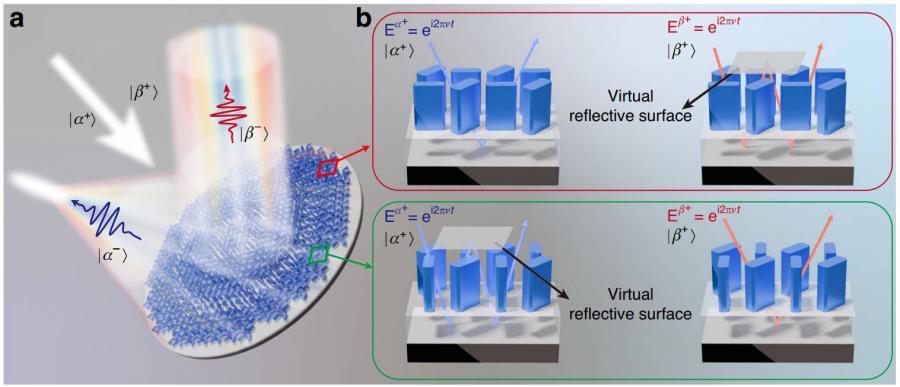
Dispersion-engineered spin photonics based on folded-path metasurfaces
GA, UNITED STATES, June 18, 2025 /EINPresswire.com/ -- Spin photonics enables precise optical manipulation but faces bandwidth constraints. Researchers in China developed a folded-path metasurface platform that achieves independent dispersion and phase control of two opposite spin states, overcoming this fundamental barrier. This innovation realizes achromatic focusing, spin Hall effects, and spatiotemporal vector fields using a single metasurface, opening new avenues for a wide range of innovations, from dynamic control of light-matter interactions to the development of next-generation spin-photonic devices.
Spin photonics is a rapidly advancing and innovative field that harnesses the spin and polarization properties of photons for sophisticated information processing and transmission, with spin-decoupled metasurfaces playing a pivotal role in complex optical field manipulation. Current spin-decoupled metasurfaces are constrained to narrow-bandwidth operation due to insufficient dispersion control—existing techniques either affect both spin states equally or work for single spin states only. Crucially, achieving independent dispersion engineering for opposing spins at subwavelength scales remains elusive, blocking progress toward broadband decoupling and integrated devices.
In a new paper published in Light Science & Applications, a team of scientists from National Key Laboratory of Optical Field Manipulation Science and Technology, Institute of Optics and Electronics, Chinese Academy of Sciences, have developed a folded-path metasurface platform that enables independent dispersion and phase control of two opposite spin states, effectively overcoming the limitations of spin photonics in achieving broadband decoupling and higher integration levels. Based on the metasurfaces, they showcase several capabilities that were previously unattainable with traditional metasurfaces, such as the realization of achromatic focusing and achromatic photonic spin Hall effect, and the generation of spatiotemporal vector optical fields with a single metasurface. The metasurface platform opens new avenues for a wide range of innovations, from dynamic control of light-matter interactions to the development of next-generation spin-photonic devices.
The key is to modify the equivalent path length by folding the light path through local interference at subwavelength scales. By carefully engineering polarization-decoupled interference, it is demonstrated to achieve independent dispersion control and versatile wavefront shaping for any pair of orthogonal states of polarization. These scientists summarize the operational principle of the proposed metasurfaces:
“More specifically the key points from our study are: (1) The first demonstration of simultaneous and independent control of both dispersion and phase for two opposite photon spin states using a single metasurface; (2) The first realization of the broadband achromatic photonic spin Hall effect; (3) The first achievement of broadband achromatic metalenses based solely on rotating meta-atoms, without requiring modifications to structural geometries; (4) The first generation of a spatiotemporal vector optical field using a single metasurface.”
“Our dispersion engineering via folded light paths represents a paradigm shift from conventional metasurface approaches relying on structural geometry modifications for effective refractive index tuning” they added.
“This metasurface platform is expected to unlock possibilities for compact spin-multiplexing devices for various applications, such as broadband polarization optics, information encoding, and spatiotemporal optical field manipulation” the scientists forecast.
Original Source URL
https://doi.org/10.1038/s41377-025-01850-w
Funding information
This work is supported by the National Key Research and Development Program of China (2023YFB2805800) and the National Natural Science Foundation of China (62175242 and U20A20217).
Lucy Wang
BioDesign Research
email us here
Distribution channels: Science, Technology
Legal Disclaimer:
EIN Presswire provides this news content "as is" without warranty of any kind. We do not accept any responsibility or liability for the accuracy, content, images, videos, licenses, completeness, legality, or reliability of the information contained in this article. If you have any complaints or copyright issues related to this article, kindly contact the author above.
Submit your press release

